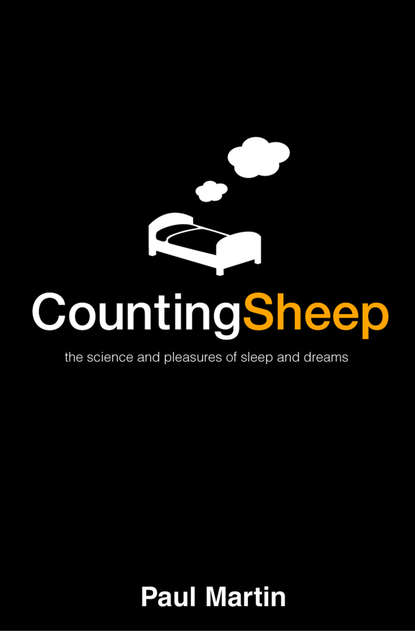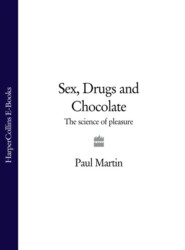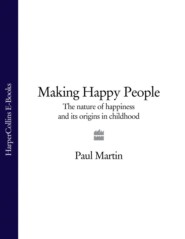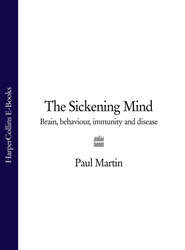По всем вопросам обращайтесь на: info@litportal.ru
(©) 2003-2024.
✖
Counting Sheep: The Science and Pleasures of Sleep and Dreams
Настройки чтения
Размер шрифта
Высота строк
Поля
‘You might just as well say,’ added the Dormouse, who seemed to be talking in his sleep, ‘that “I breathe when I sleep” is the same thing as “I sleep when I breathe”!’
‘It is the same thing with you,’ said the Hatter.
Dormice (which actually comprise 20 different species of nocturnal rodents) really do spend most of their time asleep, as do many other species of small mammals. The volcano mouse spends more than 17 hours a day asleep. Even the naked mole rat devotes 12 hours a day to sleep, despite the fact that it lives underground and has become so adapted to subterranean life that it has lost the power of sight.
The champion sleepers are two-toed sloths, which dedicate an average of 20 hours a day, or more than 80 per cent of their entire lives, to sleep. (Whereas three-toed sloths are much livelier, sleeping for a mere 17 hours a day.) Close behind come armadillos, opossums and some species of bats, which sleep for 18–19 hours a day. Many lizards spend more than 16 hours a day in sleep. Nearer to home, cats, rats, mice and hamsters sleep for 13–14 hours a day. Birds too can be great sleepers, although their sleep is less obvious to the casual observer because it is fragmented into short episodes. Starlings, which are fairly typical, spend a total of more than nine hours a day asleep, but this is split into many short bouts, each lasting on average only seven minutes. At the other end of the sleep spectrum lurk the wakeful grazers – cows, goats, elephants, donkeys, horses, sheep, deer and giraffes – all surviving on a meagre ration of three or four hours a day. But that is the minimum.
We humans occupy the low-to-middle ground of the zoological sleep spectrum, along with moles – or, at least, we do if we assign ourselves the proverbial eight hours a night. In reality, most people get substantially less than eight hours – a theme we shall be exploring in the next three chapters. On that same theme, it is notable that our closest biological relatives, the apes and monkeys, sleep more than us. Chimpanzees, rhesus monkeys, squirrel monkeys, vervets, patas monkeys and baboons sleep nine or ten hours a night, while the gorilla averages 12 hours. The sleepiest primate is the owl monkey, which clocks up 17 hours a day of sleep, accounting for more than 70 per cent of its life.
Do plants sleep? This is almost, but not quite, as stupid a question as it may seem. In one loose and misleading sense plants do display some behavioural characteristics of sleep. Many plants alter their shape each night, as though curling up to go to sleep. Some species furl their leaves like an umbrella, some allow their leaves to droop as if they need watering, while others, including lettuces and radishes, point their leaves vertically upwards. They all display a distinct 24-hour circadian rhythm.
Pliny the Elder noted this ‘sleep of plants’ in the first century AD. Eighteen centuries later, Charles Darwin investigated the ‘sleep of plants’ with a series of ingenious experiments in the garden of his home at Down House in Kent. Darwin was confident that the phenomenon was not true sleep. ‘Hardly any one,’ he wrote, ‘supposes that there is really any analogy between the sleep of animals and that of plants.’ As usual, Darwin was right. His experiments demonstrated that plants alter their shape at night to protect themselves from their physical environment. He found, for example, that if he left a plant outside at night, with its leaves tied up to prevent them from drooping, the result was a blackened, shrivelled and dead plant the next morning. Darwin also discovered that a plant will not ‘sleep’ if it is shaken violently.
Half asleep (#ulink_f6c0db3f-e53f-5b4f-8023-863d7fec0ad1)
And the small fowl are making melody
That sleep away the night with open eye
Geoffrey Chaucer, Prologue to The Canterbury Tales (c. 1387)
Sleep is such an overriding biological imperative that evolution has found ingenious ways of enabling animals to do it in the face of formidable obstacles. Nature, it seems, will do almost anything to ensure that animals sleep.
Consider dolphins, for example. They are air-breathing mammals like us, so they must swim to the surface each time they want to take a breath. They would drown if they fell into deep sleep while deep underwater. One possible solution to this biological design conundrum would be to wake up each time a breath of air was required. However, evolution has produced a more elegant solution: only one half of the dolphin’s brain goes to sleep at a time.
Dolphins are capable of what is known as unihemispheric sleep, in which one hemisphere of the brain submerges into deep sleep while the other hemisphere remains awake. The two halves of the brain take it in turns to sleep, swapping at intervals of between one and three hours. This cerebral juggling trick enables dolphins to sleep underwater without drowning, which is just as well considering that they spend a good third of their lives asleep. Unihemispheric sleep has been recorded in several species of dolphins, porpoises and whales, including bottlenosed and Amazonian dolphins, Black Sea porpoises and white whales.
Despite the apparent convenience of being able to sleep and stay awake simultaneously, very few mammals are capable of unihemispheric sleep. The biological benefits of sleeping with only half of the brain at a time presumably outweigh the disadvantages only under unusual conditions, such as those encountered by air-breathing mammals living in the deep oceans.
Unihemispheric sleep is widespread in birds, however. They do it for a. different biological reason. Sleeping with half the brain awake and one eye open allows them to sleep while simultaneously remaining vigilant for predators. In birds, each eye exclusively feeds the visual processing areas in the opposite half of the brain: thus, all the nerve fibres coming from the right eye connect to the left hemisphere of the brain and vice versa. When a bird is in unihemispheric sleep its open eye is the one corresponding to the waking half of the brain, while the closed eye is connected to the sleeping half. If a bird feels relatively safe, it closes both eyes, and both sides of its brain go to sleep.
An experiment with mallard ducks demonstrated how unihemispheric sleep helps birds to stay safe from predators. Four ducks were placed in a row along a perch, the idea being that the ducks at either end of the row would feel more vulnerable to predators than the two in the middle. In the natural world it is generally a bad idea to be on the edge of a group if you might end up as some other animal’s dinner. As predicted, video recordings showed that the outer two birds were much more likely to sleep with one eye open than the two on the inside; their unihemispheric sleep increased by 150 per cent. The amount of unihemispheric sleep rose further when the ducks were shown frightening video images of an approaching predator.
The relationship between unihemispheric sleep and vigilance was finely controlled. The exposed birds on the ends of the row preferentially opened their outward-facing eye – the one directed towards potential danger. From time to time, a bird would turn round and switch eyes, so that the open eye was still the one facing out. Simultaneous recordings of brain activity confirmed that the brain hemisphere corresponding to the open eye was always awake, while the hemisphere corresponding to the closed eye was the one in deep sleep.
The one-eyed tactic was effective: when an attacking predator was simulated on a video screen, the birds sleeping with one eye open were able to react in a fraction of a second – far faster than if they had been in deep sleep with both eyes shut.
Humans are not capable of unihemispheric sleep, although at least one writer has played with the fantasy. Damon Runyon wrote of how he once played cards with a fading champion card player who now lacked the stamina to stay awake during marathon games of gin rummy lasting eight or ten hours. When the man lost a game after making a bad play, the punters betting on him to win clamoured to remove their bets from the next game, on the grounds that he was asleep. Then someone pointed out that the allegedly sleeping player’s eyes were open, so he must be awake. ‘The one on your side is’, retorted one of the backers, ‘but the one on the other side is closed. He is sleeping one-eye.’
Nice, not naughty (#ulink_f454c206-f464-5b51-a885-99cef8a7c075)
Like all other forms of pleasure, sleep may become a passion.
Jean-Anthelme Brillat-Savarin, The Physiology of Taste (1825)
Sleep is far more than just a biological necessity. It is also a neglected source of pleasure. Consider this. Activities that are biologically important for survival and reproduction tend to be enjoyable: think of sex, or eating, or drinking, or being successful. Pleasure is one of nature’s ways of ensuring that animals do enough of the right things. Whatever happened to sleep? It is clearly essential for survival, and yet for many people it is merely a maintenance activity that brings little positive enjoyment. They sleep because they have to rather than because they want to.
In some respects, sleep has acquired the dismal status that eating had in post-war Britain, where austerity and a cultural blind spot reduced the culinary arts to a joyless act of refuelling. Bland, fatty food was daily shovelled in to keep the boilers stoked, with scant attention paid to its preparation or enjoyment. Fortunately, Britain has since developed more enlightened (if not self-indulgent) attitudes to food, and recent decades have witnessed cooking and eating emerge as pleasurable activities in their own right. For some people in wealthy nations, cooking and eating have become more a form of entertainment than a biological function.
Meanwhile, sleep is mired in the cultural equivalent of a 1950s British canteen meal: an inadequate and faintly unhealthy affair, indifferently concocted and consumed with more haste than enjoyment. Too many people regard sleep as the brain’s equivalent of fast food or overboiled cabbage. If gastronomy is ‘the reasoned comprehension of everything connected with the nourishment of man’, as it was originally defined, then should we not start thinking about sleep in the same way? I hope that by the end of this book you will be pondering the gourmet delights of sleeping, napping and dreaming, and starting to savour more of their lost pleasures for yourself.
PART II Insufficiencies (#ulink_330b3f66-5320-565b-852f-411cb70abccd)
2 Sleepy People (#ulink_e05442f8-5755-5aba-af92-a246577561ed)
She looked a little worn out, a little tired, but, then again, didn’t everybody? We all look a bit tired, these days, some more than others.
William Boyd, Armadillo (1998)
Many of us in our everyday lives are getting sleep of inadequate quantity and quality, and this is bad for our mental and physical health. Lack of sleep makes us inefficient at work, dangerous behind the wheel of a car and unattractive to be with; it lowers the quality of our lives, causes accidents and makes us more vulnerable to illness. And it is unpleasant.
I am not referring here to the acute sleep deprivation that comes from occasionally staying up all night, although that is common enough in professions such as medicine, the military and politics. Rather, I am talking about the chronic sleep deprivation that accumulates as we continually stint ourselves of sleep, day in and day out, because of the conflicting demands of work and leisure, or because of a sleep disorder, or just because we do not think sleep is important. So, what are the reasons for believing that sleep deprivation is a real problem?
Are we sleep-deprived? (#ulink_d2dc7e05-d856-5dd1-a091-37a92322eef6)
Eight hours they give to sleep.
Sir Thomas More, Utopia (1551)
The evidence that chronic sleep deprivation is a common feature of contemporary life comes in several interlinked strands. We will start with perhaps the most obvious one of all: the observation that many people feel sleepy when they are awake.
Assessing the extent of daytime tiredness in society is tricky, not least because so many people have come to regard feeling tired as normal. Nonetheless, numerous scientific studies have unearthed evidence that the problem is real and widespread. For example, a 2001 poll of Americans’ sleeping habits found that 22 per cent of adults felt so sleepy during the day that it interfered with their activities. A 1994 survey found that 5 per cent of the British population were experiencing severe daytime sleepiness, while a further 15 per cent felt moderately sleepy during the day. It also found that the people suffering from daytime sleepiness were twice as likely to have a vehicle accident.
A similar picture has emerged from other countries. For instance, a recent study discovered that 10 per cent of middle-aged Finns were excessively tired and tended to fall asleep unintentionally during the day. Their sleepiness was statistically associated with an array of nasty things, including a heightened risk of traffic accidents, premature retirement, depression and anxiety. In Sweden, 9 per cent of adults were found to be suffering from daytime sleepiness, while a survey in Warsaw recorded that 21 per cent of adults felt moderately sleepy during the day. Australian researchers detected excessive daytime sleepiness in 11 per cent of adults. You get the picture. Not even the youngest and healthiest are immune. A French investigation of 58,000 army conscripts discovered that 5 per cent of these fit young men were affected by excessive daytime sleepiness and 14 per cent of them were sufficiently tired to sleep during the day.
Overall, it is safe to conclude that at least one in ten adults in the general population (you, me and the people next door) are currently affected by moderate or severe daytime sleepiness. Some scientists believe the situation is much worse, with up to one in three adults suffering from significant sleepiness. A major review undertaken by the US National Commission on Sleep Disorders Research estimated that as many as 70 million Americans – more than a quarter of the population – were suffering from sleep deprivation or some form of sleep problem, at a direct cost to the national health care bill of about 16 billion dollars a year. The Commission’s report concluded that:
A convincing body of scientific evidence and witness testimony indicates that many Americans are severely sleep-deprived and, therefore, dangerously sleepy during the day … By any measuring stick, the deaths, illness, and damage due to sleep deprivation and sleep disorders represents a substantial problem for American society.
The problem appears to have deepened over time. Objective evidence about historical changes in sleepiness is hard to find, but there is some. A standard psychological test of personality, which has been regularly administered to large numbers of Americans since the 1930s, revealed that the proportion of men who felt tired during the day was significantly higher in the 1980s than it had been in the 1930s. And the average amount of sleep American students get has fallen by more than one hour over the past three decades. We seem to be a generally wearier bunch than our forebears.
Tired people are certainly common enough in the doctor’s waiting room. Physicians frequently encounter patients complaining of feeling tired all the time. The condition even has its own acronym, TATT. Of course not everyone who feels tired all the time is suffering from a lack of sleep. Chronic fatigue can result from anaemia, diabetes, cancer, depression and a whole host of other medical disorders. The distressing condition known as chronic fatigue syndrome (CFS), also referred to as myalgic encephalomyelitis (ME), is characterised by debilitating fatigue, pain in the muscles and joints, impairments in thinking and a general, horrible malaise. CFS is a distinct medical condition that cannot be attributed simply to lack of sleep. The origins of CFS remain controversial, but current theories focus on a combination of malfunctioning immune reactions and psychological factors.
CFS and other medical conditions undoubtedly account for some of the tiredness in society, but not much. The fact is that most people who feel tired during the day are just that – tired. They are tired because they have not been getting enough sleep. This explanation is so simple and so blindingly obvious that it is frequently overlooked.
Ordinary, everyday tiredness does not always require a medical explanation, but one is often sought nonetheless. ‘Exhaustion’ has become a voguish affliction of actors, pop stars and other celebrities. From time to time, a distraught and haggard celeb will flee to a clinic feeling, well, exhausted. The clinic duly subjects them to a battery of medical tests to establish whether they have diabetes, anaemia, ME or a thyroid disorder, while the media throb with stories about personal relationship problems, nervous breakdowns, exotic diets, exotic drugs, professional insecurities and emotional crises – just about everything, in fact, apart from plain tiredness. But given the long hours they are sometimes expected to work, plus the jet lag-inducing international travelling, it would be surprising if our stars of stage and screen did not occasionally feel very tired.
Another reason for believing that sleep deprivation is a common problem is that many of us get less sleep than we want or need, and considerably less than the proverbial eight hours we all supposedly aspire to. The evidence on this point is clear. For example, research found that in the 1990s young American adults were sleeping for an average of 7.3 hours a night. However, even this modest figure was inflated by weekend lie-ins: on weekday nights, Americans slept for an average of only 6.7 hours. A more recent study, which assessed the sleep patterns of middle-aged adults, found an average of only 6.2 hours. Similar conclusions have emerged from other countries. To give just a few illustrations, a survey in Poland found that adults there slept for 7.1 hours on workday nights, while Korean university students averaged 6.7 hours. When the Japanese Ministry of Health conducted a large survey they discovered that almost two thirds normally slept less than seven hours a night, and more than a quarter slept less than six hours. Worse still, half of Japanese high school students reported sleeping six hours or less on weekdays.
The research leaves little doubt that most adults in the USA, UK and other industrialised nations get substantially less than eight hours’ sleep most nights of the week, and many get less than seven. But does that matter? How much should we sleep?
The mythical inhabitants of Sir Thomas More’s idyllic island state of Utopia accorded sleep the priority it truly deserves. They slept for eight solid hours each night. Of the remaining 16 hours, work accounted for only six. (Sensible people.) The Utopians worked for three hours before noon then ate lunch; after lunch they rested for two hours, worked for another three hours then ate supper. They went to bed at about eight in the evening and slept for eight hours. The rest of each day they did as they pleased. Not quite the urban chic lifestyle, perhaps, but a refreshingly different perspective on life.
Conventional wisdom still holds that we need about eight hours of sleep a night. For most of us, however, the reality falls far short of the Utopian ideal, except perhaps at weekends and when we are on holiday. But is an average of, say, six or seven hours a night enough? Obviously, we cannot use Thomas More’s sixteenth-century fantasy as a scientific yardstick. So how do we judge the adequacy of sleep?
One approach is to ask people whether they think they are getting enough sleep. A recent study of more than twelve thousand adults did just that, and found that 20 per cent of them felt they were not getting sufficient sleep. Unsurprisingly, one of the factors most strongly associated with insufficient sleep was working long hours. Further evidence came from the Planet Project, said to be the largest opinion poll ever carried out. In 2000, an Internet-based survey was conducted with 1.26 million people in 251 countries. When asked how much sleep they needed in order to feel rested, 47 per cent of people replied eight hours or more. But when asked how much sleep they actually got, only 15 per cent reported sleeping eight hours or more, while 8 per cent said they got less than five hours a night. Many respondents reported having gone without sleep for long periods, whereas a mere 6 per cent said they had never missed a night’s sleep.
Six or seven hours of sleep a night is probably not enough for many people on a long-term basis. The experimental evidence suggests that the underlying sleep tendency for a typical healthy adult – that is, the amount of sleep they would take if completely liberated from work schedules and other constraints – is more like eight or eight and a half hours a night. This implies a shortfall of around an hour and a half each night. A shortfall of this size almost certainly matters. Restricting someone’s sleep by an hour and a half for just one night will measurably reduce their daytime alertness. The cumulative effects, when sleep is short-changed night after night, are far more pervasive. We shall be looking at the psychological and physical consequences of chronic sleep deprivation in the next two chapters.








